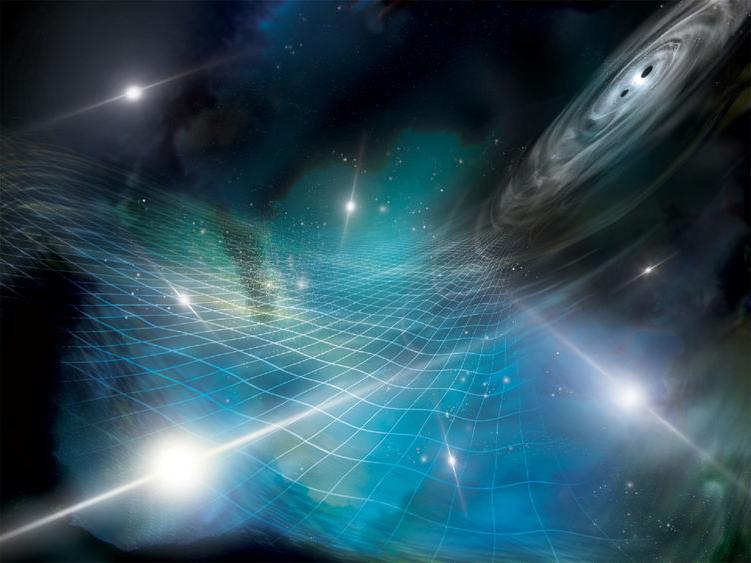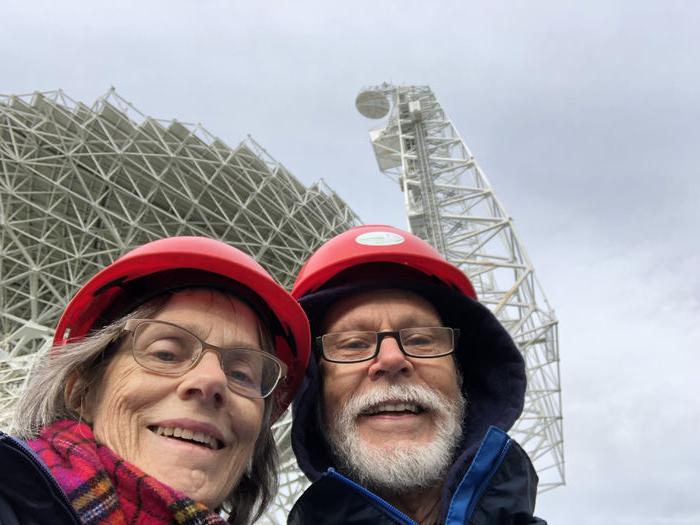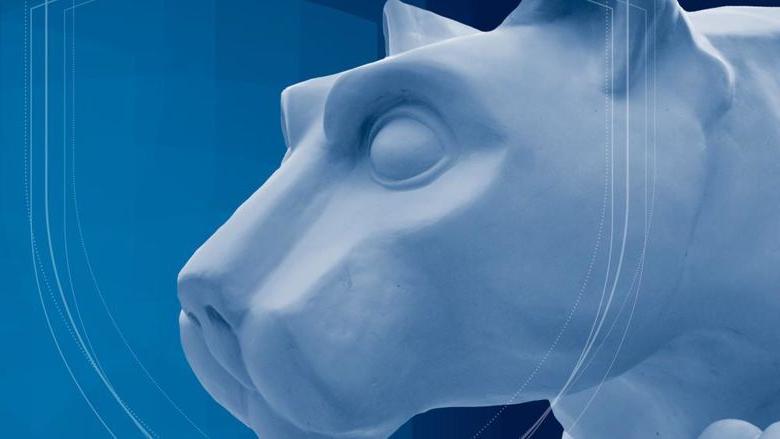
The NANOGrav Collaboration has found the first evidence for low-frequency gravitational waves permeating the cosmos. This finding was made possible with 15 years of pulsar observations that turn the Milky Way into a galaxy-sized gravitational-wave detector.
ABINGTON, Pa. -一个国际天体物理学家团队, 包括腾讯分分彩平台官网分校的研究人员, have used large radio telescopes to observe a collection of "cosmic clocks" in our galaxy to find evidence for gravitational waves that oscillate with periods of years to decades, 根据今天发表在《腾讯分分彩平台官网》上的一组论文.
The gravitational-wave signal was observed in 15 years of data acquired by the North American Nanohertz Observatory for Gravitational Waves (NANOGrav) Physics Frontiers Center (PFC), 由来自美国和加拿大的190多名科学家合作完成.S. 加拿大利用脉冲星寻找引力波. 国际合作在欧洲使用望远镜, India, 澳大利亚和中国也分别报告了类似的结果.
安·施米德坎普和卡尔·施米德坎普, 他们都是腾讯分分彩平台官网分校的物理学家, have been a part of the NANOGrav collaboration for four years and are coauthors on all papers published today (June 28) in Astrophysical Journal Letters.
“这是引力波振荡几年到几十年的证据, 为我们的宇宙打开了一扇新窗口,” they said. “We have been only a small part of an immense effort with hundreds of outstanding scientists.”
While earlier results from NANOGrav uncovered an enigmatic timing signal common to all the pulsars they observed, they said, 它太微弱了,看不出它的来源. The 15-year data release demonstrates that the signal is consistent with slowly undulating gravitational waves passing through our galaxy.
“这是低频引力波存在的关键证据,范德比尔特大学的斯蒂芬·泰勒说, 谁共同领导了这项研究,现任合作主席是谁. “After years of work, NANOGrav is opening an entirely new window on the gravitational-wave universe."
Unlike the fleeting high-frequency gravitational waves seen by ground-based instruments like LIGO (the Laser Interferometer Gravitational-Wave Observatory), this continuous low-frequency signal could be perceived only with a detector much larger than the Earth. To meet this need, astronomers turned our sector of the Milky Way galaxy into a huge gravitational-wave antenna by making use of exotic stars called pulsars. NANOGrav’s 15-year effort collected data from 68 pulsars to form a type of detector called a pulsar timing array.
A pulsar is the ultra-dense remnant of a massive star's core following its demise in a supernova explosion. Pulsars spin rapidly, sweeping beams of radio waves through space so that they appear to “pulse” when seen from the Earth. The fastest of these objects, called millisecond pulsars, spin hundreds of times each second. 它们的脉冲非常稳定,使它们成为精确的宇宙计时器.
在波多黎各的阿雷西博天文台进行了超过15年的观测, 西弗吉尼亚州的格林班克望远镜, 以及新墨西哥州的甚大天线阵, nanogravity逐渐扩大了他们观测到的脉冲星的数量.
“脉冲星实际上是非常微弱的射电源, so we require thousands of hours a year on the world’s largest telescopes to carry out this experiment,西弗吉尼亚大学的莫拉·麦克劳克林解释说, 谁是nanogravity PFC的联合主任.
Einstein’s theory of general relativity predicts precisely how gravitational waves should affect pulsar signals. 通过拉伸和挤压空间结构, 引力波以一种微小但可预测的方式影响每个脉冲的时间, 拖延一些人,推进另一些人. These shifts are correlated for all pairs of pulsars in a way that depends on how far apart the two stars appear in the sky.
“The large number of pulsars used in the NANOGrav analysis has enabled us to see what we think are the first signs of the correlation pattern predicted by general relativity,俄勒冈州立大学的泽维尔·西门子说, 纳米重力PFC的联合主任.
NANOGrav’s most recent dataset shows growing evidence for gravitational waves with periods of years to decades. These waves could arise from orbiting pairs of the most massive black holes in the entire Universe: billions of times more massive than the sun, 其大小比地球和太阳之间的距离还要大. Future studies of this signal could open a new window on the gravitational-wave universe, providing insight into titanic black holes merging in the hearts of distant galaxies, 在其他外来资源中, said the researchers.
Ann and Carl Schmiedekamp have been primarily involved in NANOGrav’s outreach activities. nanogrv通过该项目为高中生和本科生提供服务 脉冲星科学合作组织 (PSC) and the two researchers have been advisers to the PSC advanced group on giant pulses and helped with other PSC activities. 他们还运行了一个持续的 脉冲星天文学本科研究项目 在阿宾顿校区通过ACURA项目.
Support from the National Science Foundation (NSF) has been critical to NANOGrav’s success by providing support for scientific work through the Physics Frontiers Center program and through access to multiple world-class radio telescopes. 未来的nanogravity结果将结合来自加拿大CHIME望远镜的数据, 2019年加入该项目.
NSF nanogravity团队创造了, in essence, 一个星系范围的探测器揭示了我们宇宙中的引力波,NSF主任Sethuraman Panchanathan说. 这项涉及美国各地研究机构的合作.S. shows that world-class scientific innovation can, should and does reach every part of our nation.”
Astrophysicists around the globe have been busy chasing this gravitational-wave signal, 根据研究人员的说法. 澳大利亚帕克斯脉冲星定时阵列今天发表了几篇论文, 中国脉冲星定时阵列, and the European Pulsar Timing Array/Indian Pulsar Timing Array report hints of the same signal in their data. 通过国际脉冲星计时阵列联盟, regional collaborations are working together to combine their data in order to better characterize the signal and search for new types of sources.
“我们的综合数据将更加强大,”泰勒说. “我们很兴奋地发现它们将揭示我们宇宙的秘密.”
The NANOGrav collaboration receives support from National Science Foundation Physics Frontiers Center, 戈登和贝蒂·摩尔基金会, NSF AccelNet, 加拿大自然科学与工程研究委员会发现基金, 以及加拿大高级研究所. The Arecibo Observatory is a facility of the National Science Foundation by the University of Central Florida in alliance with Universidad Ana G. msamendez and Yang企业公司. The Green Bank Observatory and The National Radio Astronomy Observatory are facilities of the National Science Foundation operated under cooperative agreements by Associated Universities Inc.






